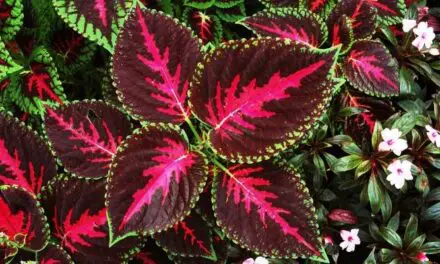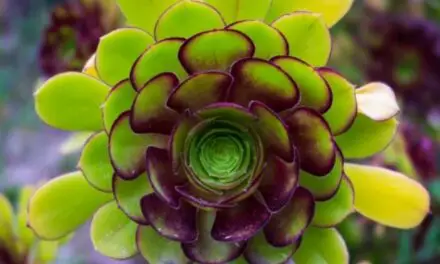If you are looking to add a pop of color to a shaded area, impatiens may be the plant you are looking for.
There are many different varieties of impatiens that offer a range of different colors and sizes.
But generally, these plants are easy to care for, bloom nonstop from spring through fall and last for a long time.
However, a common problem that people face is their impatiens mysteriously starting to turn white.
Table of Contents
Why Are My Impatiens Turning White?

Your inpatients are turning white because they have either been affected by downy mildew, they have faded because of getting too much sun or your impatiens flowers are losing color because they have come to the end of their bloom.
Downy Mildew
This fungus usually affects Busy Lizzies the worst.
Sunpatiens (a new stronger breed of impatience) tend to have a much stronger natural resistance to downy Mildew.
If your impatiens have white spots, it is most likely a powdery mildew fungus.
It appears as a white fuzzy mold on the leaves and is more prominent during periods of high humidity.
What To Do:
Unfortunately, there isn’t a cure for Impatiens that have already been infected with downy mildew.
But, you can take some steps to keep it from spreading or taking hold in the future.
Also Read: How Long Do Cyclamen Plants Last? (All You Need To Know)
Preventing Downy Mildew
Downy mildew likes cool and damp conditions.
Good Air Circulation And Watering Practices
Try to keep good air circulation by not overcrowding your plants.
Water in the morning, only water the soil and try not to get your impatiens leaves and flowers wet.
Isolate Infected Plants
As mentioned, there is no cure for downy mildew.
To stop the spread, isolate affected plants and spray plants that appear to be healthy with a preventative fungicide, such as neem oil.
Too Much Sunlight
There are three popular types of impatiens, Busy Lizzies, New Guinea and SunPatiens.
New Guinea impatiens have smaller blooms and can withstand a little more sunlight than Busy Lizzies, making them less prone to bleaching out.
And SunPatiens are a new breed of impatiens that are even more resistant to sunscald and fungal infections.
But Busy Lizzies definitely need to be kept in a spot that provides mostly dappled shade and good air circulation.
Watering your impatiens when the plant is in full sun can quickly cause bleaching.
If you’ve been having plenty of hot, sunny weather, the heat and sunlight can stop chlorophyll from forming inside their leaves, causing them to appear white.
What To Do:
Put your impatiens in a shadier spot and they should green up again.
If your impatiens are planted in pots, move them to an area that receives plenty of dappled shade.
And if they are growing in your garden, plant some larger shrubs around them to provide the shade they need.
Flowers At The End Of Bloom
If your impatiens are not turning white because of sunscald or downy mildew it may simply be that the flowers have come to the end of their bloom.
As the flowers on your impatiens come to the end of their bloom and die, they don’t always fall off by themselves – especially if they’ve been kept moist.
As the flowers are left to die on the plant, they may lose their color and begin to fade.
What To Do:
Remove any dead or dying flowers from your Impatiens as soon as possible.
To keep new and healthy blooms all summer, pinch the tops of the stems off after each time a flower blooms and fades.
This will reduce the risk of fungal infections taking hold, create space for new growth and allow the plant to direct energy into growing new leaves and flowers.
Final Thoughts
If you’re planning to get yourself some impatience, look for the variety called SunPatiens.
They are like a mix between Busy Lizzies and New Guinea impatiens but bred to be much tougher.
If you do find that your impatiens are turning white and you think it could be caused by sun bleaching or the plant getting too hot, simply move or replant your impatiens in a shadier spot.
If your impatiens are turning white because of mold, there may not be much you can do but separate infected plants from healthy ones.
Unfortunately, there is no good way to remove this mildew disease from your plant.




